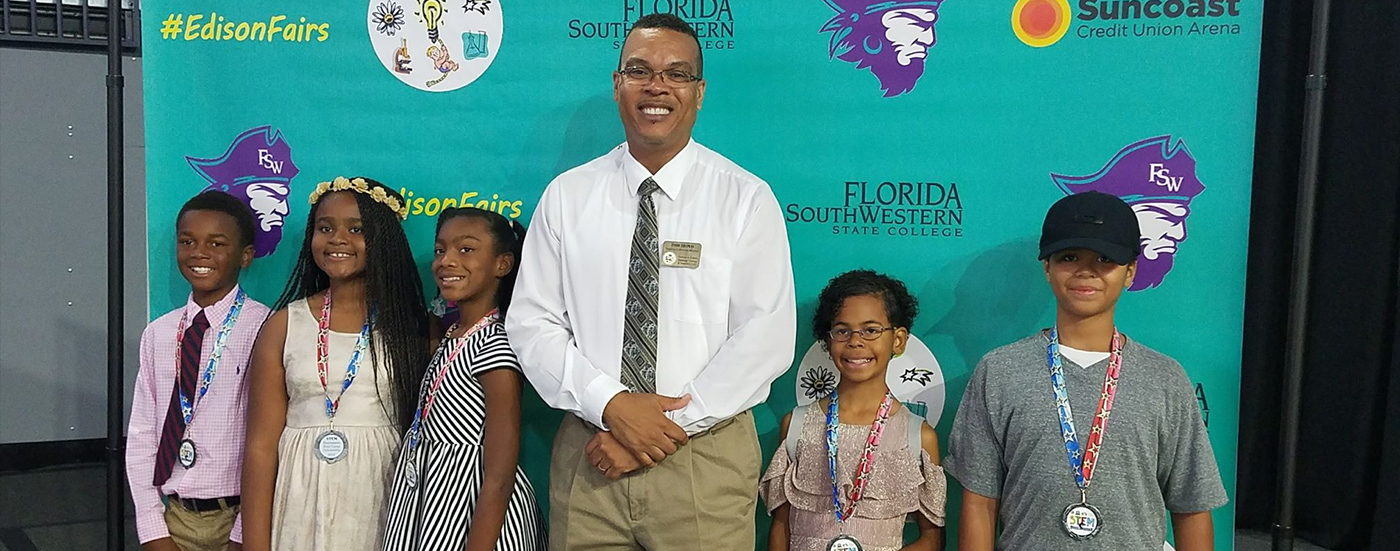- Pick your grade appropriate Logbook. A student may select a higher division logbook with the approval of the teacher/instructor.
- Review the logbook and invention process before starting.
- Understand the importance of keeping good records.
Thomas Edison Festival of Lights regional inventors fair
Florida Gulf Goast Affiliate of The Henry Ford Invention Convention Worldwide

students
The invention process
Steps to inventing, a brief overview. Before you go on to build your invention, you must first get approval from your teacher and parents. Have them sign and date your logbook.
The Invention Process
logbook selection

Identify Problems

- Pick your grade appropriate Logbook. A student may select a higher division logbook with the approval of the teacher/instructor.
- Review the logbook and invention process before starting.
- Understand the importance of keeping good records.
Ideation

- Pick your grade appropriate Logbook. A student may select a higher division logbook with the approval of the teacher/instructor.
- Review the logbook and invention process before starting.
- Understand the importance of keeping good records.
Originality and Approval

- Pick your grade appropriate Logbook. A student may select a higher division logbook with the approval of the teacher/instructor.
- Review the logbook and invention process before starting.
- Understand the importance of keeping good records.
developing

- Pick your grade appropriate Logbook. A student may select a higher division logbook with the approval of the teacher/instructor.
- Review the logbook and invention process before starting.
- Understand the importance of keeping good records.
market potential

- Pick your grade appropriate Logbook. A student may select a higher division logbook with the approval of the teacher/instructor.
- Review the logbook and invention process before starting.
- Understand the importance of keeping good records.
communication

- Pick your grade appropriate Logbook. A student may select a higher division logbook with the approval of the teacher/instructor.
- Review the logbook and invention process before starting.
- Understand the importance of keeping good records.
The Fairs
School Fair

- Pick your grade appropriate Logbook. A student may select a higher division logbook with the approval of the teacher/instructor.
- Review the logbook and invention process before starting.
- Understand the importance of keeping good records.
Regional Fair

- Pick your grade appropriate Logbook. A student may select a higher division logbook with the approval of the teacher/instructor.
- Review the logbook and invention process before starting.
- Understand the importance of keeping good records.
“ICF” Invention Convention Florida

- Pick your grade appropriate Logbook. A student may select a higher division logbook with the approval of the teacher/instructor.
- Review the logbook and invention process before starting.
- Understand the importance of keeping good records.
National Fairs

- Pick your grade appropriate Logbook. A student may select a higher division logbook with the approval of the teacher/instructor.
- Review the logbook and invention process before starting.
- Understand the importance of keeping good records.
Resources
Insight, resources & examples

- Pick your grade appropriate Logbook. A student may select a higher division logbook with the approval of the teacher/instructor.
- Review the logbook and invention process before starting.
- Understand the importance of keeping good records.

Stay in the Know
Big ideas are all around us. We want to keep you up to date on our fairs and how you or someone you may know might be able to get involved.

